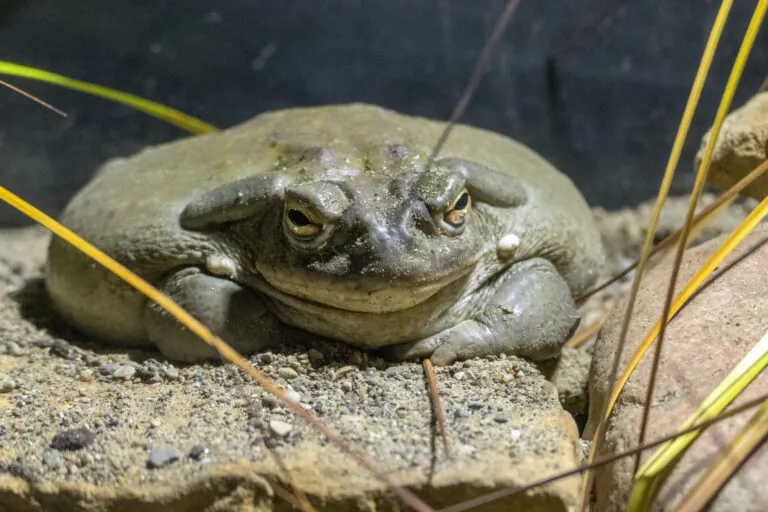Until Holiday Magic Returns to the Zoo!
-
Menu
- Plan Your Visit
- Meet The Animals
- Check Out Events
- Memberships
- New in 2025 - Giant Tortoise
- Christmas at the Zoo
- About The Zoo
- Support the Zoo
- Conservation
- Education
- Groups & Private Events
- Zoo News
- Contact
- Zoo Store
- Indianapolis Prize
- Global Center for Species Survival
- Schedule
- Donate
- Membership
- Tickets

- Plan Your Visit
- Meet The Animals
- Check Out Events
- Memberships
- New in 2025 - Giant Tortoise
- Christmas at the Zoo
- About The Zoo
- Support the Zoo
- Conservation
- Education
- Groups & Private Events
- Zoo News
- Contact
- Zoo Store
- Indianapolis Prize
- Global Center for Species Survival

Colorado River Toad
Incilius alvarius
About
Meet the largest native toad in North America! Its skin is olive green or brown, smooth and leathery, with raised areas on its head and legs. Colorado River toads are solitary and nocturnal, resting by day in burrows made by rodents. When threatened, they release a toxin that can be deadly to small animals and pets. Scientists are looking to see whether the toxin can be used as medication in humans for certain mental health conditions.
Like other amphibians, these desert dwellers need water to reproduce. They breed in these streams, ditches and other aquatic habitats that fill up with water during the summer rains. Females lay thousands of eggs in the water, which metamorphose into tadpoles and then toads over the next month. They can live up to 10 years or more.

Conservation
Colorado River toads are thriving across their habitat, but as amphibians, they are sensitive to pollution in aquatic habitats. Toads absorb chemicals through their skin and can suffer from toxins in the water. Help keep amphibians safe by keeping waters free of pollution.
WHERE ARE THEY AT THE ZOO?

